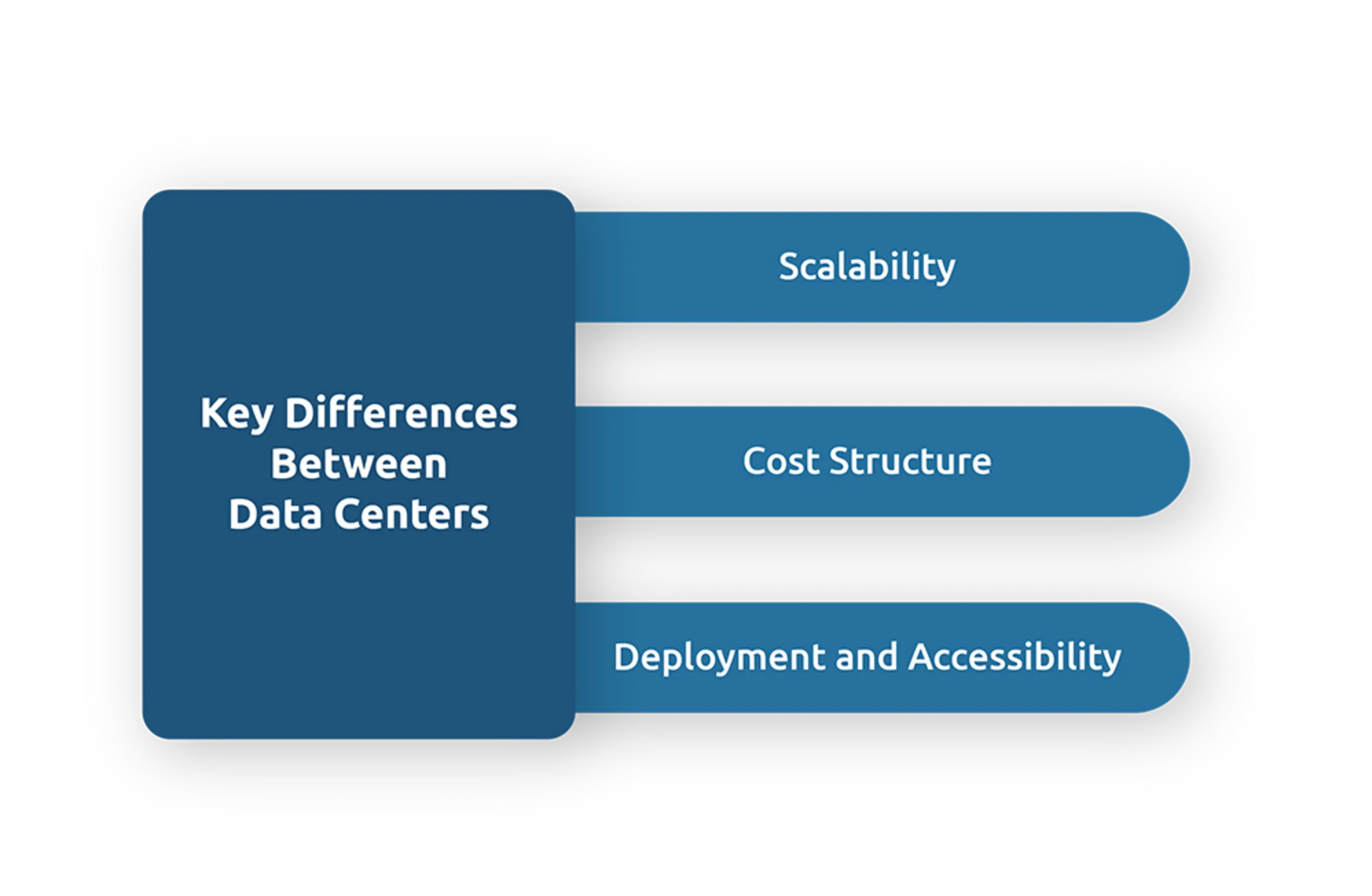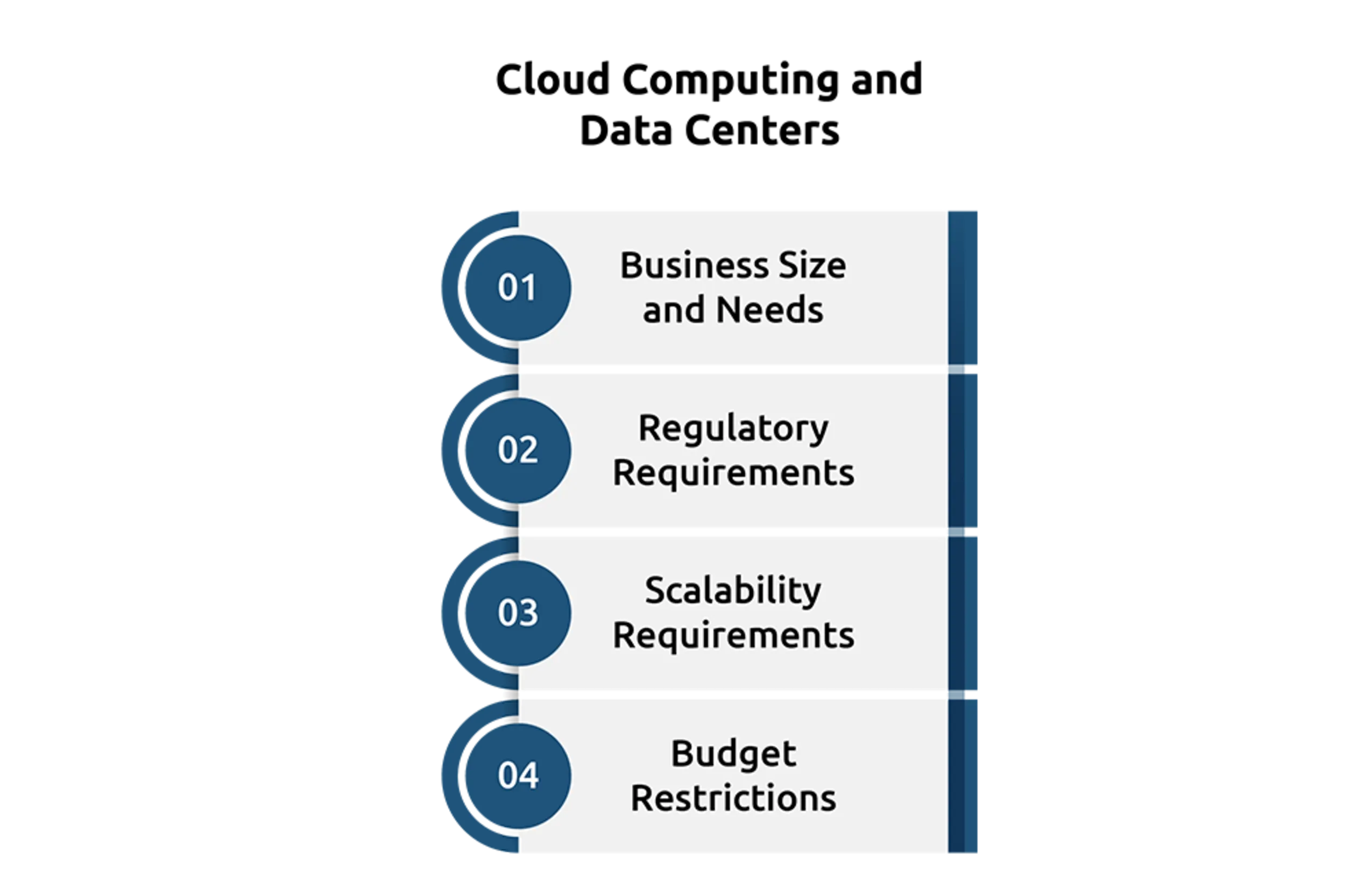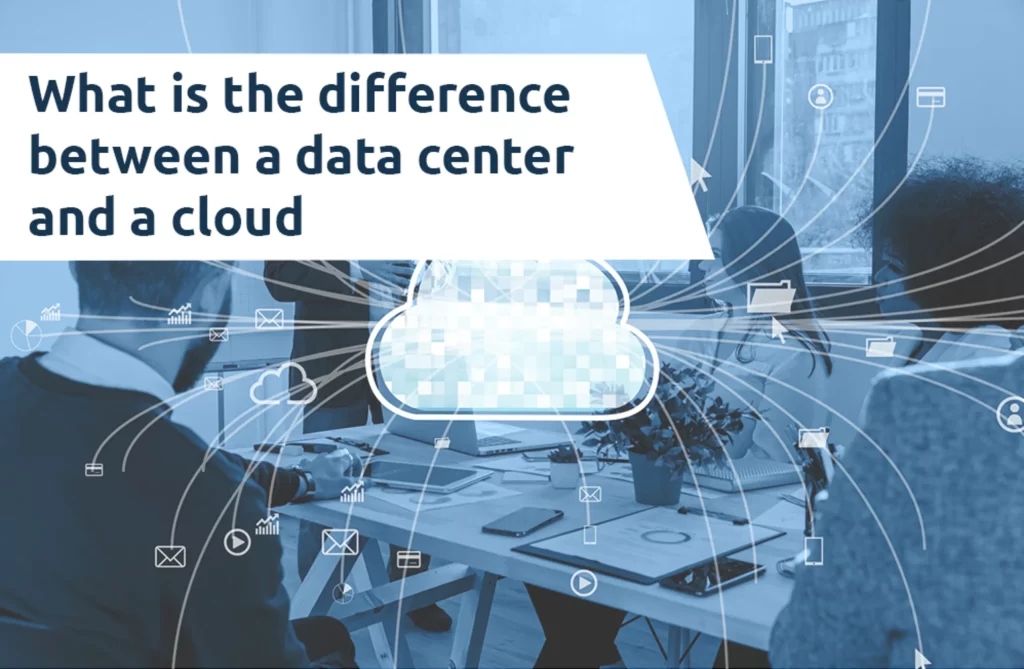In today’s rapidly evolving digital landscape understanding the distinctions between traditional data centers & cloud computing is essential to businesses and also for individuals alike. Both play pivotal roles in data storage, management & processing, yet they differ significantly in architecture, scalability, cost, and also in management.
Defining Data Centers and Cloud Computing
A data center is a physical facility that organizations use to house critical applications and data. It comprises networked computers, storage systems, and computing infrastructure, enabling the storage, processing, and dissemination of data and applications. Data centers have evolved from the large computer rooms of the 1940s to sophisticated facilities that support modern IT operations.
On the other hand, cloud computing describes the provision of computer services via the internet, such as servers, storage, databases, networking, software, and analytics (“the cloud”). Instead of storing data on local computers or on-site data centers, this paradigm enables users to access and save data on distant servers.
Key Differences Between Data Centers and Cloud Computing
| Aspect | Data Centers | Cloud Computing |
| Infrastructure Ownership and Management | Organizations own and maintain the physical hardware and infrastructure, granting complete control over equipment and its management. This entails significant capital expenditure and ongoing maintenance costs. | Services are provided by third-party vendors who own and manage the infrastructure. Users access resources on a pay-as-you-go basis, eliminating the need for substantial upfront investments and reducing the burden of maintenance. |
| Scalability | Scaling up requires purchasing and installing additional hardware, a process that can be time-consuming and costly. Scaling down may result in underutilized resources. | Offers on-demand scalability, allowing users to quickly adjust resources to meet changing needs. This flexibility supports dynamic workloads and can lead to cost savings by aligning resource usage with demand. |
| Cost Structure | Involves high initial capital expenditures for hardware, software, and facility setup, along with ongoing operational expenses for power, cooling, and maintenance. | Operates on a subscription or pay-per-use model, converting capital expenses into operational expenses. This model can be more cost-effective, especially for businesses with fluctuating workloads. |
| Deployment and Accessibility | Deployment of new applications or services can be slower due to hardware procurement and setup times. Access is typically limited to specific locations or networks, which may restrict remote work capabilities. | Enables rapid deployment of applications and services, often within minutes. Resources are accessible from anywhere with an internet connection, facilitating remote work and collaboration. |
| Security and Compliance | Provides organizations with direct control over security measures and compliance protocols, which is advantageous for industries with stringent regulatory requirements. | While reputable cloud providers implement robust security measures, organizations must ensure their use of cloud services complies with relevant regulations and that data is adequately protected. |
| Performance and Reliability | The quality of the hardware and network infrastructure influences performance. Reliability depends on factors like redundancy, disaster recovery plans, and maintenance practices. | Leading cloud providers offer high-performance infrastructure with global networks, ensuring low latency and high availability. Service Level Agreements (SLAs) often guarantee specific uptime percentages. |

Selecting Between Cloud Computing and Data Centers
A number of factors influence the choice between using a traditional data center and using cloud computing:
Business Size and Needs: While small and medium-sized organizations may find the flexibility and affordability of cloud services advantageous, large corporations with significant resources may favor the control provided by data centers.
Regulatory Requirements: To retain direct control over sensitive data, industries subject to stringent data privacy rules may choose to use on-premises data centers.
Scalability Requirements: Cloud computing’s scalability may be useful for businesses anticipating rapid expansion or variable workloads.
Budget Restrictions: In order to avoid significant upfront expenditures, businesses with less funding may favor the cloud computing operational expense model.
Hybrid Solutions
Many businesses use a hybrid strategy that blends cloud services with on-premises data centers. With this approach, they may continue to have control over important apps while using the cloud’s scalability and flexibility for other workloads.

In conclusion
Comprehending the distinctions between cloud computing and data centers is essential to making well-informed choices regarding IT infrastructure. Cloud computing offers flexibility and scalability, whereas data centers offer control and personalization. The decision between these two models or a hybrid method that combines the best of both worlds will be guided by an evaluation of organizational demands, regulatory requirements, and budgetary restrictions.







